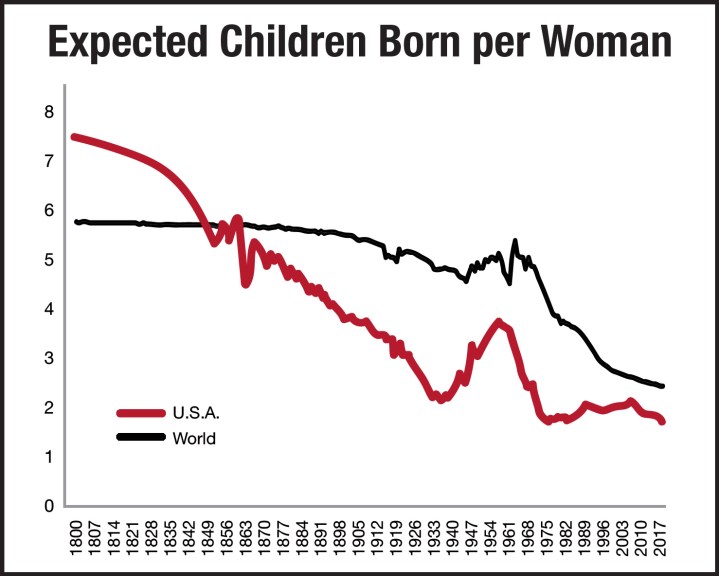Kerby Anderson
Members of a very popular South Korean boy band were denied draft exemptions even though it would reduce revenue to the country. Why? Because there aren’t enough boys available to serve in the military. Lyman Stone uses this illustration to highlight the extremely low birth rate in South Korea.
But that country is just one of many examples of what has become a global birth dearth. Fertility rates have been declining in all the developed countries of the world. The US figures are better than in many countries in Europe and Asia, but still illustrate the decline. Fertility rates in this country declined from 2.12 children per woman in 2006 to just 1.72 today. The figure might even drop lower if we hit another recession.
Although legalized abortion, contraception, and a down economy are often cited for the reasons for lower fertility, those factors only explain part of the decline. The US first reached birth rates around two children per woman during the Roaring Twenties, not during the Great Depression and long before contraceptive access was readily available.
Modern economies depend on various transfers of wealth across generations. The obvious examples are Social Security and other so-called entitlement programs. An older generation also expects the younger generation to buy their houses and other assets. But that is not happening. Even the trade deficit is due in part to the fact that there are more assets than there are buyers to purchase them.
The solution, it seems, is not to pass government policies that try to make people want to have children. The best that can be done would be to eliminate government policies that currently penalize couples with children. At the least, government should reduce the financial barriers for parents who want to bring kids into the world.
 Listen Online
Listen Online Watch Online
Watch Online Find a Station in Your Area
Find a Station in Your Area










 Listen Now
Listen Now Watch Online
Watch Online
